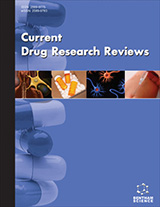
Abstract
Background: A combination of fixed-doses containing 0.5 mg lobeglitazone sulfate and 500 mg metformin hydrochloride has demonstrated efficacy in enhancing glycemic control in diabetes.
Aim: The projected work aimed to establish and validate a high-performance thin-layer chromatographic methodology for the quantification of both drugs in tablet formulations.
Objective: The task involves creating and validating a method in accordance with ICH guidelines to quantify two particular drugs in tablet formulations accurately.
Methods: The high-performance thin-layer chromatographic analysis utilized aluminum plates layered with silica gel 60F254, and the solvent system consisted of acetonitrile, 1 M ammonium acetate (methanol), toluene, and triethyl amine (1.5:2.5:4:0.2 v/v/v/v), followed by densitometric scanning at 237 nm.
Results: The methodology exhibited linearity in the range of 100-1500 ng/band for lobeglitazone sulfate and 1000-15000 ng/band for metformin hydrochloride, with correlation coefficients of 0.9991 and 0.9992, correspondingly. Exceptional sensitivity was observed, with detection limits of 8.17 ng/band for lobeglitazone sulfate and 271.34 ng/band for metformin hydrochloride, along with quantification limits of 24.75 ng/band for lobeglitazone sulfate and 822.24 ng/band for metformin hydrochloride. The method demonstrated precision (% relative standard deviation of peak area <2) and accuracy (recovery between 96 and 103%).
Conclusion: The suggested methodology is fit for the concurrent quantification of both drugs in tablet formulations, making it applicable for routine quality control assessments in laboratories.

























